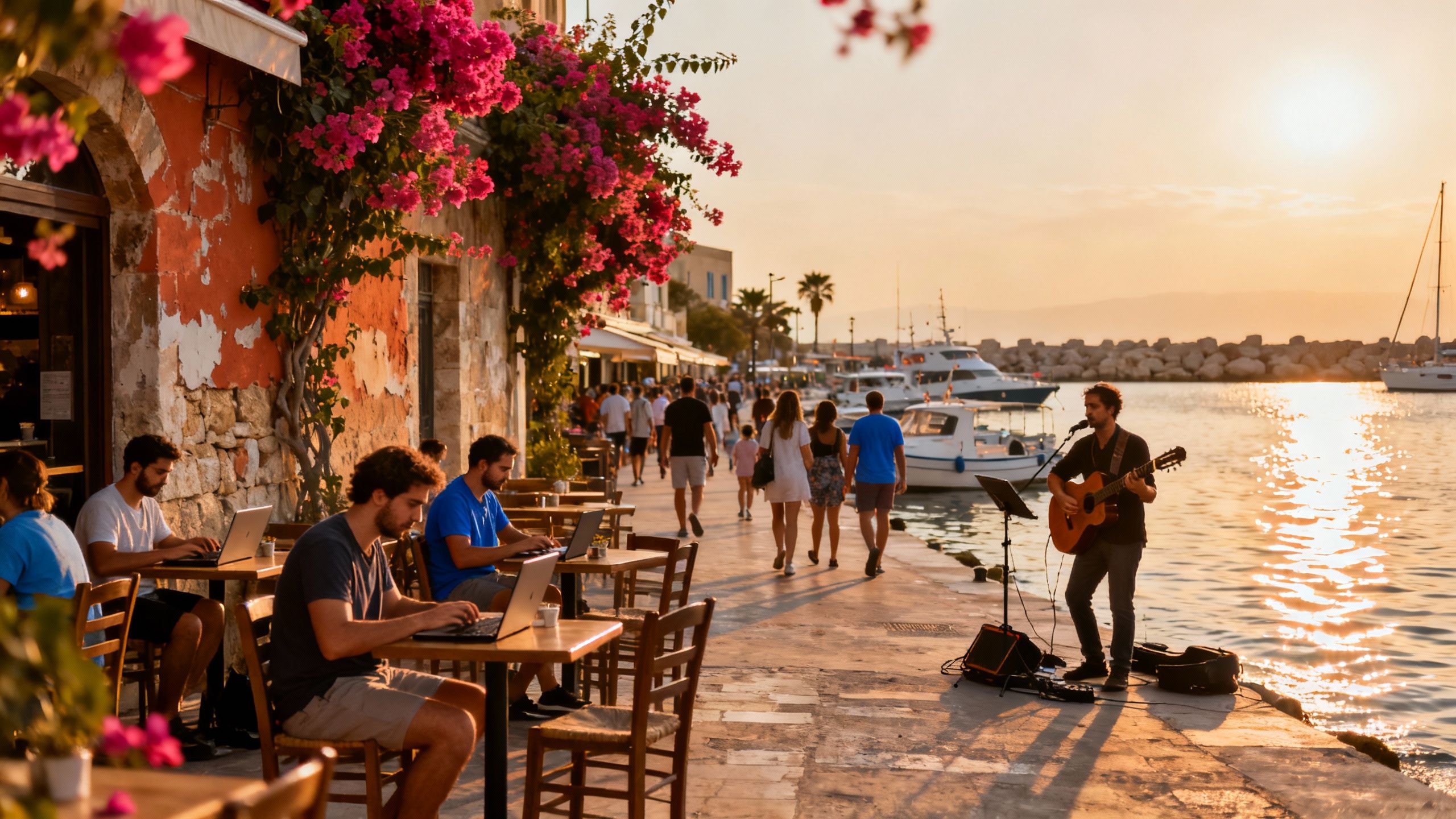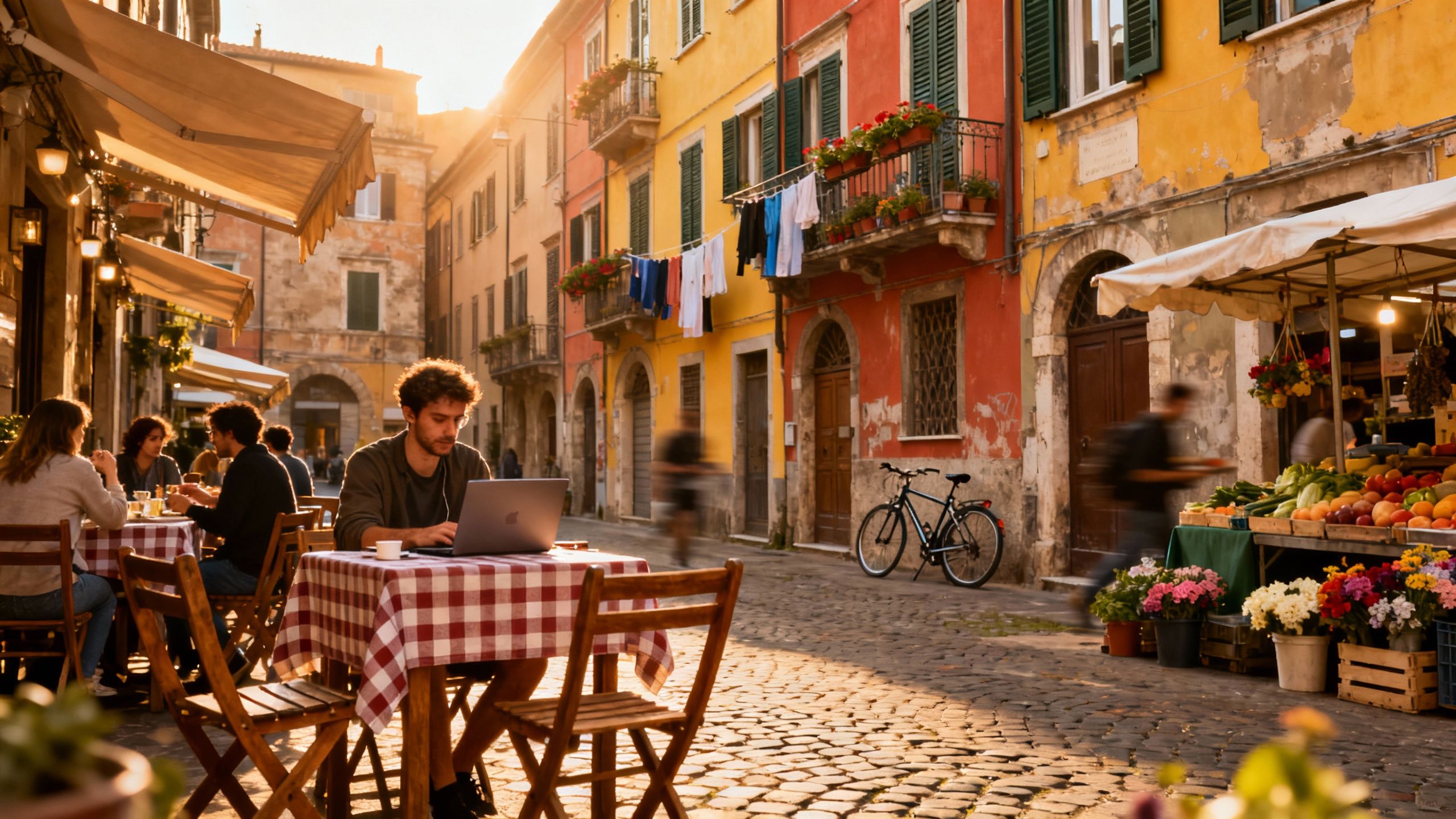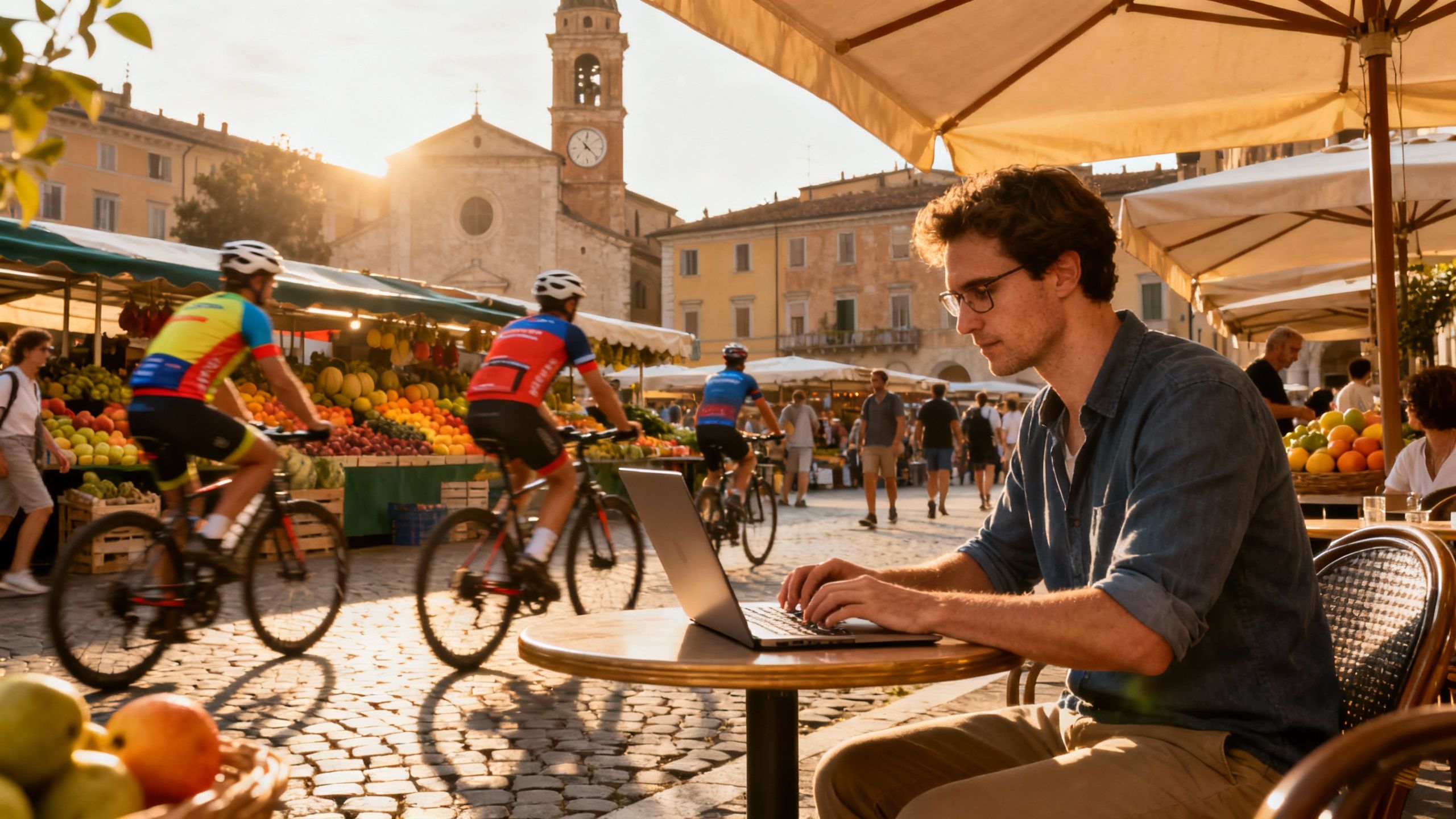North vs South Italy: Where Lifestyle Outperforms Price
Italy’s regions offer lifestyle bargains where space, food and pace beat coastal hype — use national data and local checks to match tempo, internet and resale anchors.
Imagine sipping a morning espresso on a sunlit balcony in Trastevere, then jumping on a 20‑minute tram to a coworking hub. Picture weekends at a hilltop market in Puglia, fresh focaccia in hand, while your laptop waits for a second cup. Italy is simultaneously ritual and rhythm: long lunches, lively piazzas, and seasons that rearrange daily life — and your property priorities.
Living the Italy lifestyle: rhythms, neighborhoods, taste
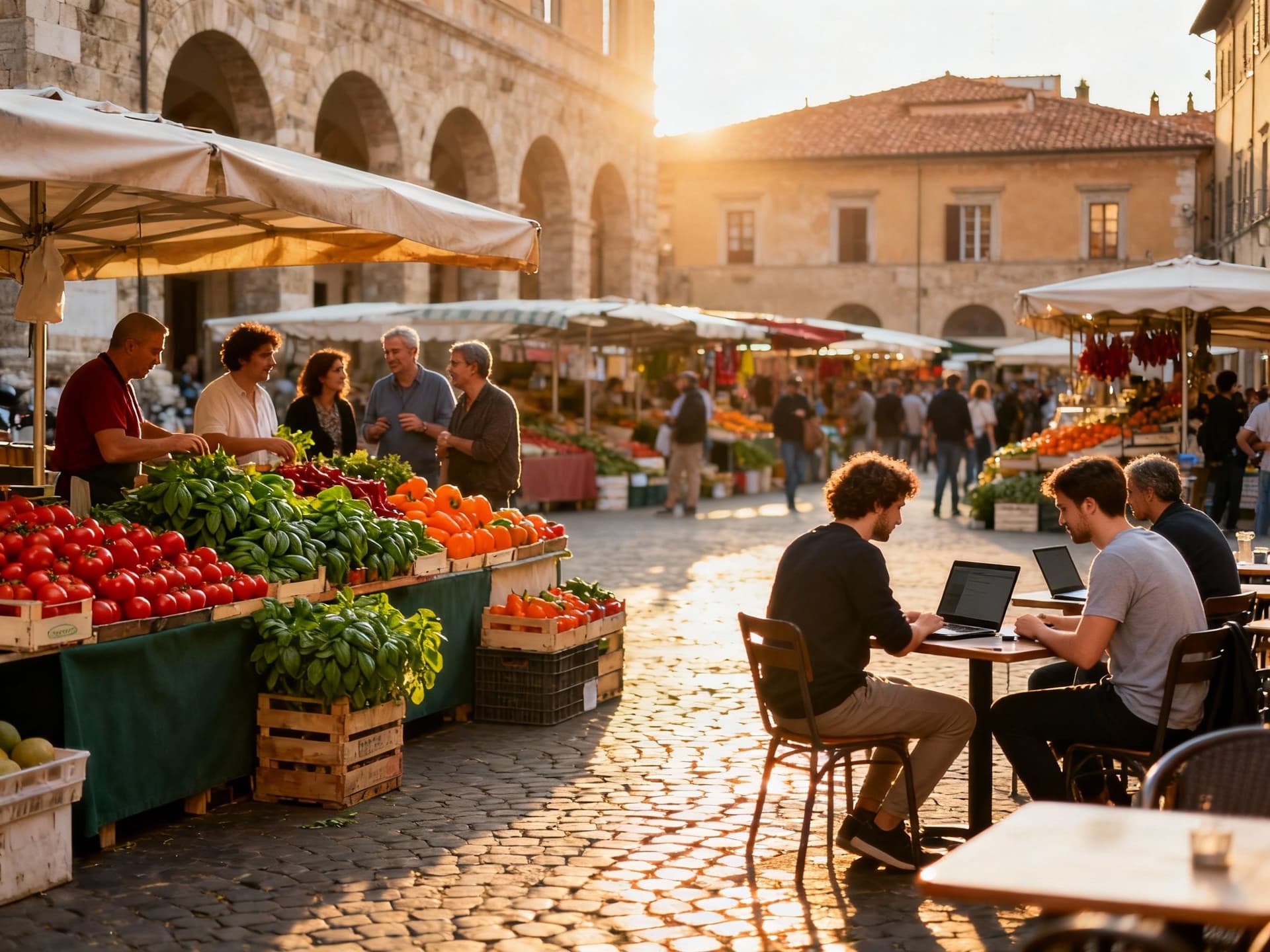
Italy isn’t one vibe — it’s dozens. Northern hill towns hum with design studios and fast trains; coastal villages slow down to beach bars and sunset passeggiate; historic centres pulse with cafés and ephemeral markets. For a nomad, that means you choose tempo: fast internet + city cafés or slow‑cooked weekends and big terraces. The trick is matching the mood you love with the property type that supports it.
Milan & Turin (urban tempo)
If you want a 9–5 rhythm with weekends for Michelin meals and galleries, Milan or Turin deliver. Coworking density and high‑quality cafes make working days seamless. Expect modern apartments with compact terraces or loft conversions; noise and a faster pace come with better connectivity and more opportunities to plug into the local startup scene.
Puglia, Calabria & Sicily (slow living, big value)
Want a sunlit terrace, cheap square metres, and markets where sellers call you by name? Southern regions offer that — and often at a fraction of northern prices. Here you trade some speed (internet and transport) for space, privacy and salted‑air weekends. For remote workers there are growing micro‑communities of creatives and restaurateurs worth scouting.
- Lifestyle highlights to scout in person
- Morning espresso at Caffè Greco (Rome) — cobbled streets and warm‑up crowds
- Weekends at Mercato di Porta Palazzo (Turin) — produce, antiques, conversation
- Sunset aperitivo on Lungomare (Bari) — beachfront social life with casual coworkers
Making the move: practical considerations that preserve lifestyle
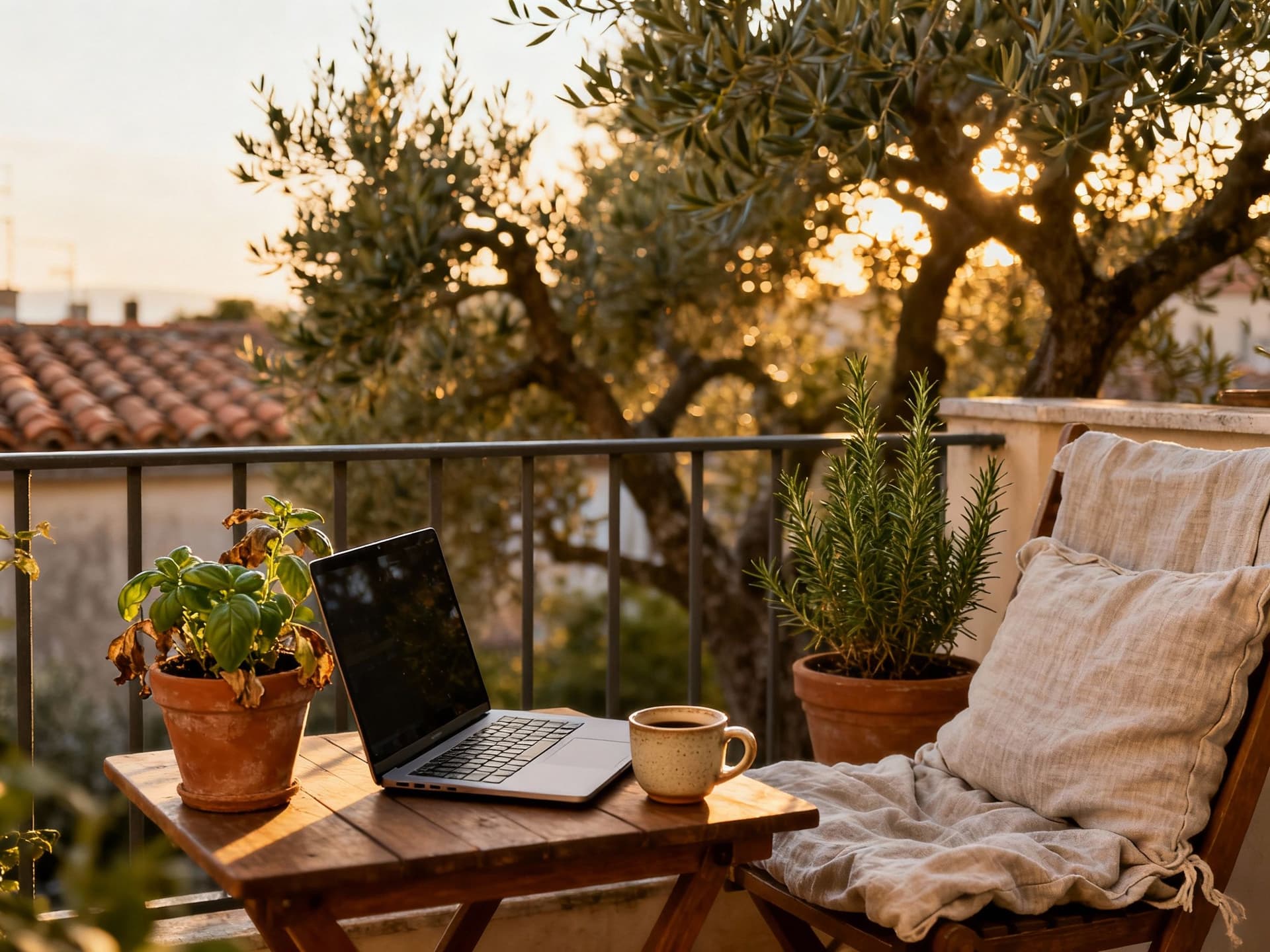
Dreams meet paperwork fast — but the good news: Italian prices are rising unevenly. National indexes show modest annual increases, with big regional differences. That means you can get lifestyle upside without overpaying — if you look where demand hasn’t yet peaked. Use national data as a trend map, then zoom into neighbourhood microtrends with a local agent.
Property styles and how they shape daily life
Historic centre flat: perfect for walkability and instant atmosphere, but expect thin walls, stairs, and limited outdoor space. Modern apartment: better insulation, elevators, and built‑in work nooks. Countryside masseria or villa: space and privacy, but factor in maintenance, winter heating and sometimes dodgy mobile signals. Pick the type that complements work habits — reliable internet and a quiet corner matter more than a skyline view for many nomads.
Work with local experts who match lifestyle to logistics
Ask agencies about fibre availability, past renovations, and local neighbourhood rhythms. Italy’s nationwide fibre rollout has pockets of delay; some charming towns still lack full ultrafast coverage. A local agent will test speeds, confirm utilities, and flag seasonal access issues (narrow streets that block moving trucks, winter road closures in mountain villages).
- Practical checklist blending lifestyle + property steps
- Run an evening‑and‑weekend visit to feel a neighbourhood’s true tempo (not just Monday morning traffic).
- Ask sellers for recent internet speed tests and confirm provider options (fibre, fixed wireless, Starlink where needed).
- Check walkscore and local amenities — grocery, pharmacy, coworking or reliable cafés within 10–15 minutes.
- Vet heating costs and insulation on older properties — Italy’s winters can surprise you in the Alps or inland towns.
Insider knowledge: what expats wish they’d known
Real talk from people who stayed: language opens doors; a single friendly barista can be your local connector. Seasonality shapes life — coastal towns hum in July and nap in January; historic centres feel alive year‑round but can be touristy. Plan social life and services (healthcare, schools) by neighbourhood, not municipality.
Cultural integration, community, and daily routines
Say yes to local rituals: aperitivo on Thursdays, market mornings, and the slow grocery run. Join language classes, neighbourhood associations, or a gym — these are how locals and expats meet. Keep expectations realistic: bureaucracy can be slow, but neighbours tend to be generous if you show effort and curiosity.
Long‑term lifestyle and property realities
Italy’s market shows moderate national growth but strong local variance. Buying in a southern coastal town can give you space and rental upside during summer; buying near a university or transport hub typically stabilises value year‑round. Think about resale: centrality, transit and broadband are the three long‑term value anchors.
- Red flags to watch (and ask your agent to check)
- No documented recent renovation permits — may hide structural or legal issues
- Unconfirmed fibre availability — essential for remote workers
- Seasonal access problems (single‑lane roads in mountain towns) that affect livability off‑season
- Unclear condominium (condominio) rules or high shared costs that erode monthly budget
Wrap‑up: Italy reshapes how you work and live. Neighborhoods are personality tests — pick one that fits the tempo you want. Use national data to spot macro trends, then lean on a local agent to test internet, confirm permits, and scout quiet cafés with reliable plugs. Fall in love first; verify second.
Dutch investment strategist guiding buyers to Greece and Spain; practical financing, tax, and portfolio diversification.
